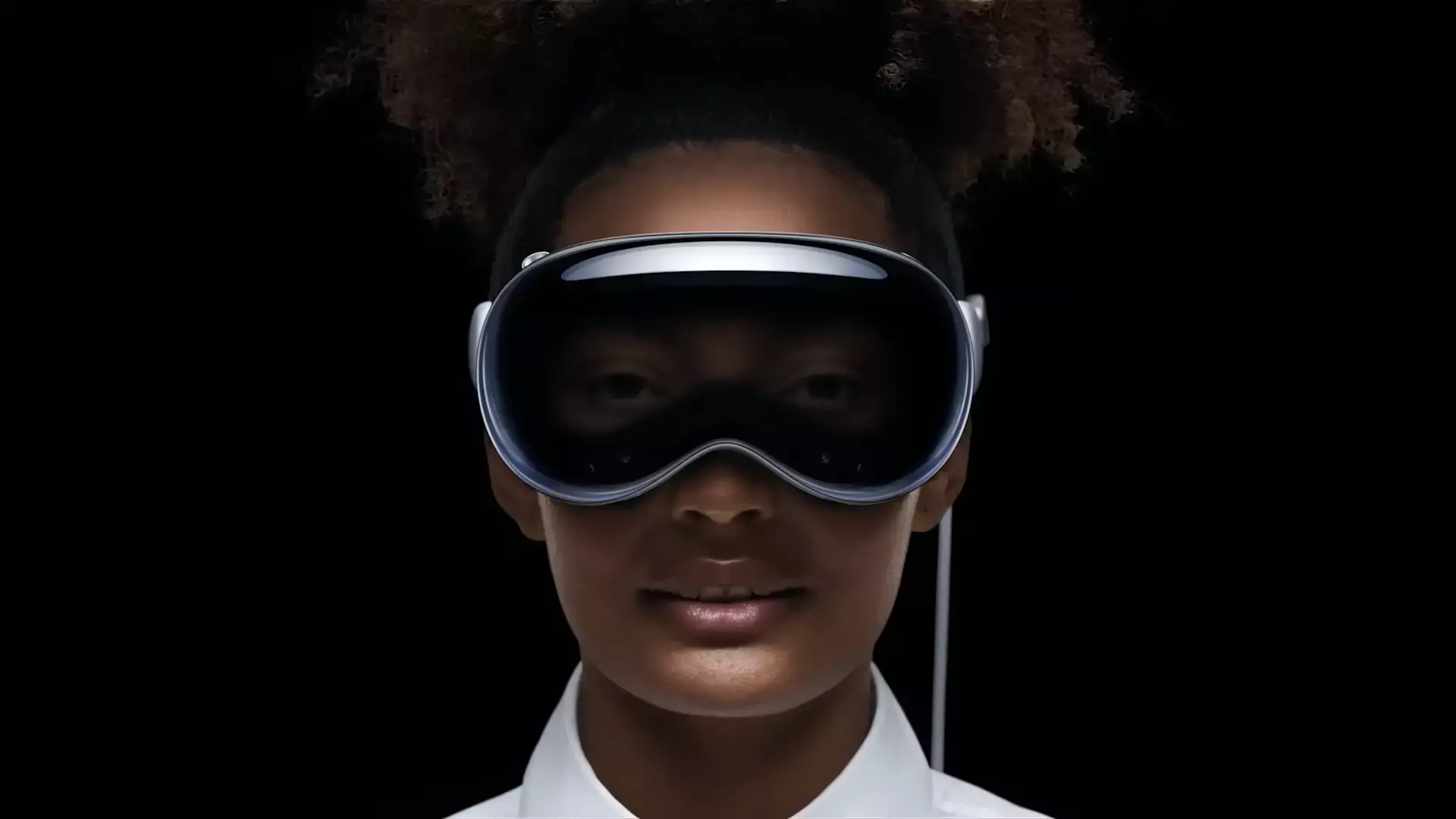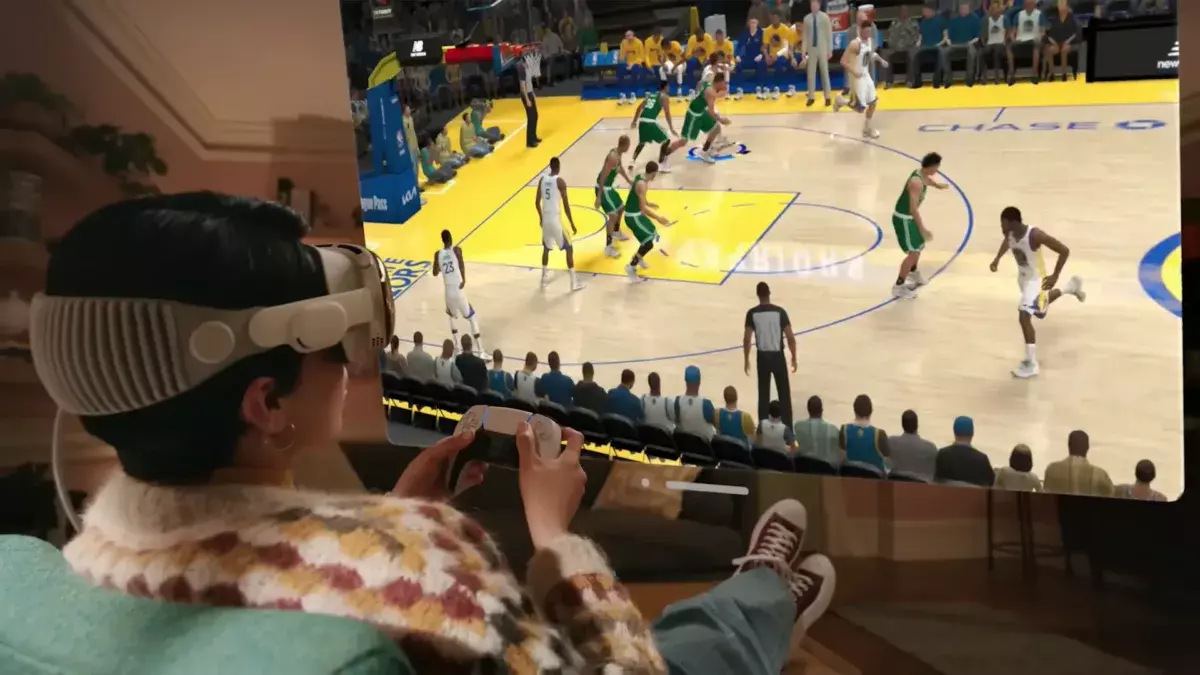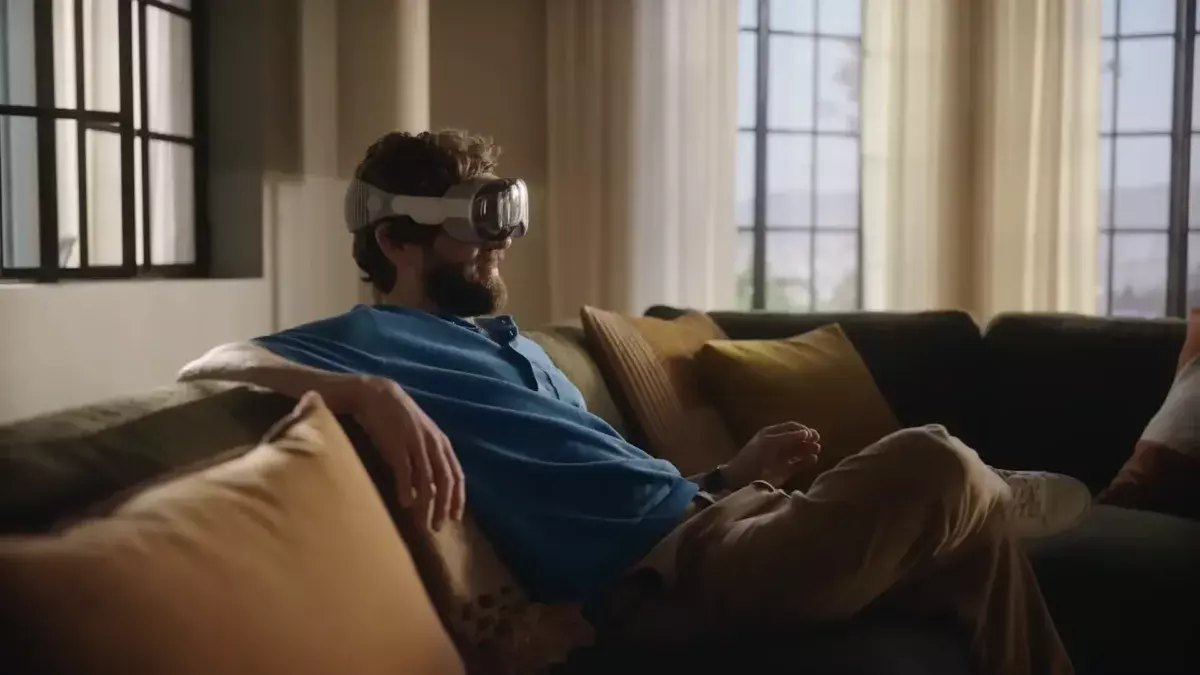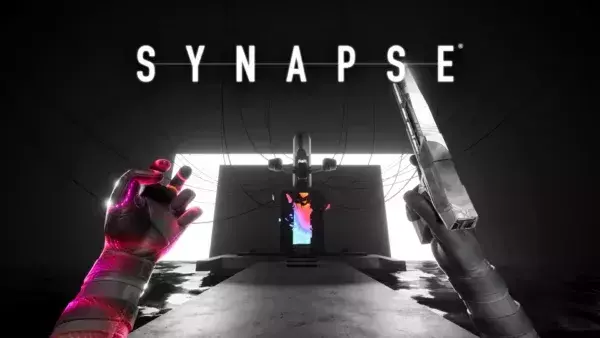
Apple Vision Pro offers a bold take on augmented reality, but for Alan Wen it leaves a lot to be desired compared to fully-immersive VR gaming.
$3,499!
Good to get that one out of the way, given that it’s surely the first talking point on everyone’s lips – and fingertips – after Monday’s unveiling of the Apple Vision Pro augmented reality headset. Suddenly, every other headset on the market looks like an absolute bargain. Must be nice to have that kind of money, et cetera.
I’m not here to talk about the price, though, which when you think about all the incredible features and tech that’s been packed into those ski goggles – which look like they might belong to Daft Punk Jr – is probably justified. I’m also not going to fixate on the creepy dead look of the eyes you can see through the headset’s EyeSight feature. Or the unintentional Black Mirror vibes you get from capturing spatial 3D photos and videos, allowing you to relive bygone family moments like a rich divorced dad.
(In fact, the Vision Pro looks like it’s got the rich divorced dad market cornered; I suppose once your other half has taken the kids and the house, a three-grand headset that transforms your new empty box apartment into something more idyllic might well be a bargain.)

She’s turned the weans against us. Credit: Apple.
Let’s be clear, though, that this isn’t intended to be one of those hot takes where I relish in a cheap and easy dunk, because there genuinely is plenty that’s remarkable in Apple’s tech should light a fire under every other rival in the same way the iPhone did for smartphones. For one, its passthrough feature knocks every other attempt out of the park, while its AR features give a true holodeck experience with full 3D spatial mapping, giving you access to multiple screens you can grab and pinch to move around or expand.
Setting all those things aside, though, what does the Vision Pro do for VR gaming – the reason I’ve been splashing out on headsets over the last few years?
It could simply be that I’m not the target market for Vision Pro. After all, Apple has been careful not to mention VR at all (the keywords the company’s going for seems to be ‘spatial computing’, which I can’t even deal with right now). Indeed, tech companies like Meta have appealed to the mainstream by leaning into mixed reality so that you’re not completely isolated in a virtual world. If we’re to look at Vision Pro from an AR perspective, then there’s an obvious argument you’re going to have a more enriching AR experience when you have a 360 degree field of view rather than viewing the world, say, your phone. Imagine Pokémon Go via Vision Pro! But if you thought smartglasses already singled the wearer out as an awkward social pariah, how does Apple expect you not to look like a complete poindexter when wearing Vision Pro out and about? And given that AR games encourage you to get out and, as the kids say, touch grass, I find it hard to square that circle.
Moving back to the issue of VR gaming, and I don’t know if the medium even factors into Vision Pro’s plans. But let’s talk about what I like about VR gaming. It’s about being completely transported to a seemingly real virtual world. VR critics may call it isolating, but in gaming parlance we call it immersion. Immersion isn’t even unique to VR: you can apply the same term to old-school flat-screen gaming, and I’d say it’s the same when you’re in the darkness of a cinema and lost in the story projected in front of you. It’s just that VR arguably does that immersion better because it’s a complete 360 experience.

Vision Pro, Apple Arcade and a DualSense controller – the futuristic way to play NBA 2K23. Credit: Apple.
I’m not sure if that’s something Vision Pro can actually offer, though Apple’s promotional material does show how you can expand a 3D environment to fully envelop your surroundings if you wish.
That the headset operates using voice and hands without any controllers is, of course, another way to appeal to mainstream audiences who balk at anything resembling a controller. Yet when it comes to VR games, one of the most effective means of interacting with the environment is by wielding a weapon or tool. The heft and feedback you’d expect from such an object isn’t possible if you aren’t physically holding anything.
In any case, it’s the Vision Pro’s lack of full VR immersion that’s a sticking point for me. Apple may say it doesn’t want users to be isolated, which is why they’ll allow the display to show someone’s face when they approach you while you’re in the middle of an experience. But there’s also no scenario I can think of where I’d find someone’s face suddenly materialising inside my headset anything other than intrusive or downright weird. Would you find it normal if someone suddenly shoved their face in front of you while you’re watching a film or reading a book?
VR isn’t some dystopian isolating experience. It’s something I like to be able to jump into, enjoy and then jump back out again, and in a way the short battery life of all-in-one headsets or the shorter playtime of VR games has conditioned us not to be strapped in for long periods. But in those moments, there really is something special about being fully immersed in a pure and singular VR experience, whether that’s the blissful sensory override of Rez Infinite or racing laps behind the wheel of a Ferrari in Gran Turismo 7. But just like any other great piece of entertainment, after 30 minutes, or an hour, or two max, I can take the headset off and come back to the real world.
Read more: PSVR2 | The top 10 best games to play right now
What is dystopian and isolating, however, is a headset envisioned as something you’d wear all the time for every day-to-day interaction, which also seems to hilariously imply that all your physical homeware and hardware is obsolete – probably because they’ve all gone towards financing the Vision Pro in the first place. “Sorry kids, I’ve sold our 4K TV, sound bar, and the couch, but it’s okay, because I’ve got everything inside my new headset,” he said before his better half was finally pushed over the edge.

Who needs belongings when I have these amazing goggles? Credit: Apple.
I jest, but in the one concrete example of gaming shown during the presentation, we see that you can use any physical controller, such as a DualSense, and create a huge virtual screen in front of you to play your favourite games from Apple Arcade. On paper, that sounds appealing – more so than the virtual theatre options that VR headsets have offered, especially since you can resize the screen to the size of a 100-foot screen, and still look astonishingly sharp thanks to the headset’s ridiculous micro-OLED display that gives your eyes a total of up to 23 million pixels.
Assuming you’re content with Apple Arcade – as presumably Vision Pro won’t support non-Apple gaming hardware – there’s a case to be made that it’s a dream second screen that blitzes whatever 4K TV is already in your home. But in a living room setting where someone else is using the TV, being on your phone or Switch is one thing. Sitting there with futuristic ski goggles strapped to your face, though? That screams of a red flag, even if people can see your eerie eyes through the visor where you’re present-but-not-present. Even the much derided image of a basement dwelling gamer doesn’t seem so bad. And that’s without shelling out three and a half grand for the privilege.
The Apple Vision Pro is due for release in early 2024.





